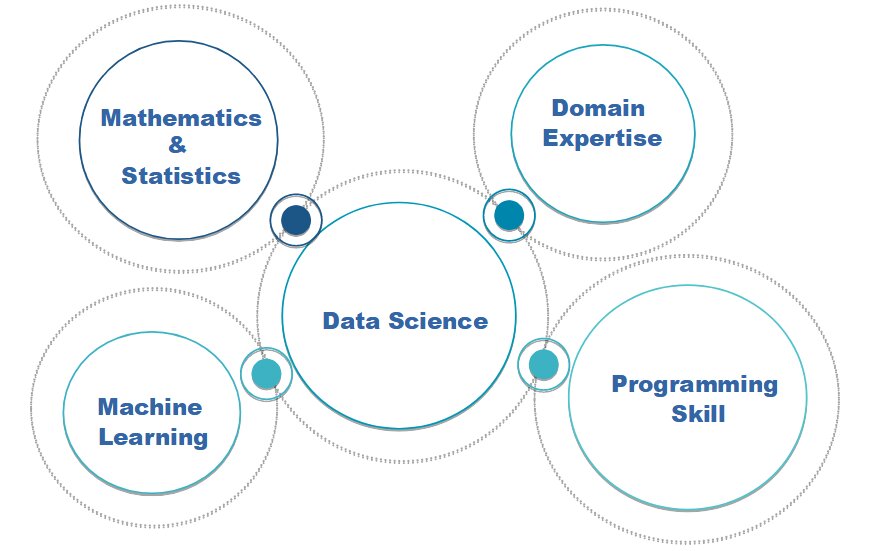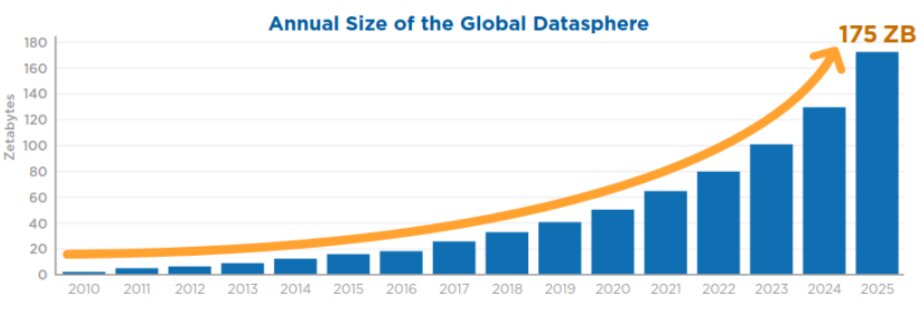Must Known Data Science Trends and Technologies
“The best way to learn Data Science is to do Data Science”
– Chanin Nantasenamat
Introduction:
Before discussing Must Known Data Science Trends and Technologies, let’s discuss the elephant in the room:
“What is Data Science“
In the Layman term, Data Science is the extraction of useful insights from the given data. But the extraction of data is not that simple. It needs Domain Expertise, Programming Skills, Machine Learning, Mathematics, Statistics, and Probability.
As technology is evolving and upgrading every day so is the increase of data. Data is generated by every single click, swipe, comment, search, etc. As per the survey of IDC global DataSphere, Nov 2018 Annual size of global DataSphere will be 175 ZB(1 ZB = 1 Trillion GB).
Data Science is not just about Data, it also corresponds to Machine Learning, Artificial Intelligence, Natural Language processes, etc. Now to understand the opportunities these fields have we must have to understand the latest trends in Data Science.
Best-suited Data Analytics courses for you
Learn Data Analytics with these high-rated online courses
1. Predictive Analysis:
Predictive analysis is predicting certain unknowns based on historical data. It uses Data, Statistical methods, and Machine Learning algorithms. Banking, Health Care, Human Resource, Marketing Industry are mainly using Predictive Analysis for Fraud Detection, Reducing Risks, Optimizing Market Campaigns and Operations.
-
Fraud Detection:
The financial industry and health insurance industry with a huge amount of data and money at stake used Predictive Analytics to detect and reduce fraud managing credit risk, maximize the cross sale, and identifying the patient most at risk of chronic disease to find the best investment.
-
Reducing Risks:
A credit score is used to evaluate and predict the potential risk and the likelihood of the customer to default or not on the loan amount, insurance claims, and collections. Credit Score is one of the most well-known cases of Predictive Analytics.
-
Optimizing Market Campaigns and Operations:
The industry uses customer experiences and responses to predict and promote the cross-sell opportunities, manage their resources, and forecast the inventories to increase their market presence and revenue. Predictive Analytics enables the organization to work more efficiently.
2. Artificial Intelligence:
Dr. John McCarthy(Computer Science Department – Stanford University) in his paper in 2004 came up with the most formal definition of Artificial Intelligence “It is the science and engineering of making intelligent machines, especially computer programs. It is related to a similar task of using computers to understand human intelligence but Al doesn’t have to confine itself to biologically observable methods”.
Artificial Intelligence is around us for quite a long time, it first came into existence when the famous mathematician Alan Turning in his famous paper “Computing Machinery and Intelligence(1950)” asked :
“Can machines think ?”
The application of Artificial Intelligence is very very vast ranging from Speech Recognition, Custom Services, Recommendation Engines, Computer Vision, Automated Stock Trading, etc.
-
Speech Recognition:
It is also known as Speech to text, it uses Natural Language Processing to process human speech into written format. Common examples of it’s seen around us like Alexa, Siri.
-
Recommendation Engines:
It mainly works on our previous search history. Using the previous data it recommends the new trends, fashions, movies, etc. to the customers and helps the retailers to develop more efficient cross-selling strategies. All the e-commerce sites like Amazon, Flipkart are based on Recommendation Engines.
-
Computer Vision:
It uses images, digital images, videos to take the required action or make the recommendation based on the inputs. The basic goal of computer vision is to enable computing devices to correctly analyze and then interpret digital images. Self-driving cars, auto-tagging of people over social media posts are common examples of Computer Vision.
3. Machine Learning:
Machine Learning is one of the applications of Artificial Intelligence which can automatically learn and improve from the experience without being explicitly programmed. Machine learning algorithms are mainly classified into two categories: Supervised and Unsupervised Learning.
-
Supervised Learning:
Supervised learning uses supervised algorithms which use the labeled data to train the model to classify the data or predict the outcomes accurately. The supervised algorithm is used to classify the spam in your inbox folder, predicting the house prices, predicting which customers are likely to churn from the bank. Some supervised algorithms are Linear Regression, Logistic Regression, Decision Tree, Random Forest, AdaBoost, XgBoost.
-
Unsupervised Learning:
It uses unsupervised algorithms to analyze and cluster the unlabeled dataset. These algorithms identify the hidden patterns and make the cluster to make the required conclusion. The unsupervised algorithm used for product and customer segmentation, Similarity Detection, Recommendation System. Some unsupervised algorithms are Principal Component Analysis, Singular Value Decomposition approaches. K-mean clustering.
4. Deep Learning:
Deep Learning is the subset of Machine Learning which tries to mimic the human brain through combinations of data inputs, weights, and biases. It enables the system to cluster the data and make the prediction with incredible accuracy.
Machine Learning uses a set of algorithms to train the data and make predictions while Deep Learning algorithms attempt to draw a similar conclusion as the human brain by continuously analyzing the data with the given logical structure. It uses a multi-layered structure of algorithms called Neural Networks.
Despite being the subset of Machine Learning it has some advantages over it like
- Needlessness of Feature Extraction
- Deep Learning models increase their accuracy with the increasing amount of training data while the machine learning models such as Naive Bayes classifier and Support Vector machine stop improving after a certain point.
Deep Learning models are used in industries like Automated Driving, Industrial Automation, Aerospace, Medical Research.
-
Automated Driving:
Deep Learning models automatically detect objects like traffic signals and signs, pedestrians, vehicles to reduce accidents and drive smoothly.
-
Medical Research:
As per the UN report, approximately 10 million deaths in 2020 are due to cancer, so cancer researchers are using deep learning models to automatically detect cancer cells.
-
Aerospace & Defence:
Deep learning models are used to identify the objects using satellites to locate the area of interest.
Conclusion:
Data Science is not just limited to only these four, it is expanding at an exponential rate which is going to shape the future and for the better. Some of the other technologies which Data Science also includes are Cloud Services, AR/VR(Augmented and Virtual Reality), Internet of Things(IoT), Big Data, Quantum Computing, Edge Computing, and many more. The world is moving towards the data and will rely on the data for governance, business, education, medicine, and these technologies will be the driving force to fulfill all their demands.
————————————————————————————————————–
If you have recently completed a professional course/certification, click here to submit a review.

Vikram has a Postgraduate degree in Applied Mathematics, with a keen interest in Data Science and Machine Learning. He has experience of 2+ years in content creation in Mathematics, Statistics, Data Science, and Mac... Read Full Bio





